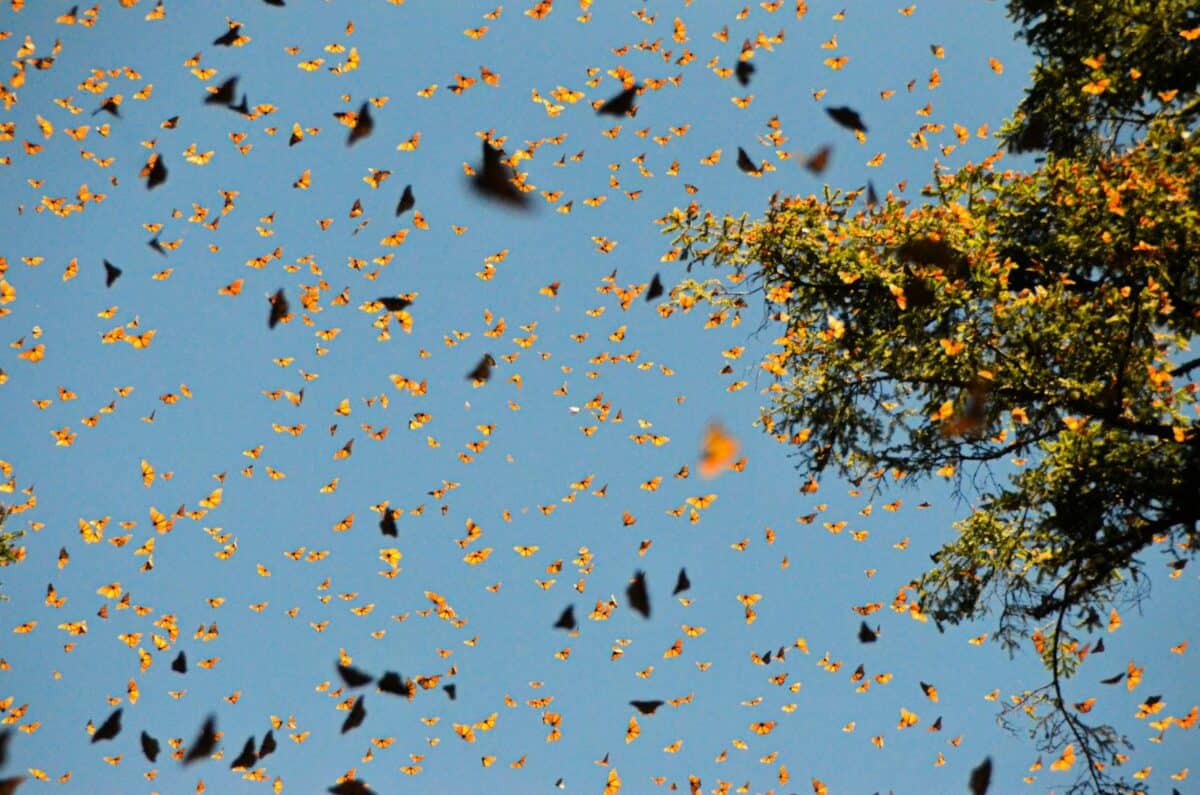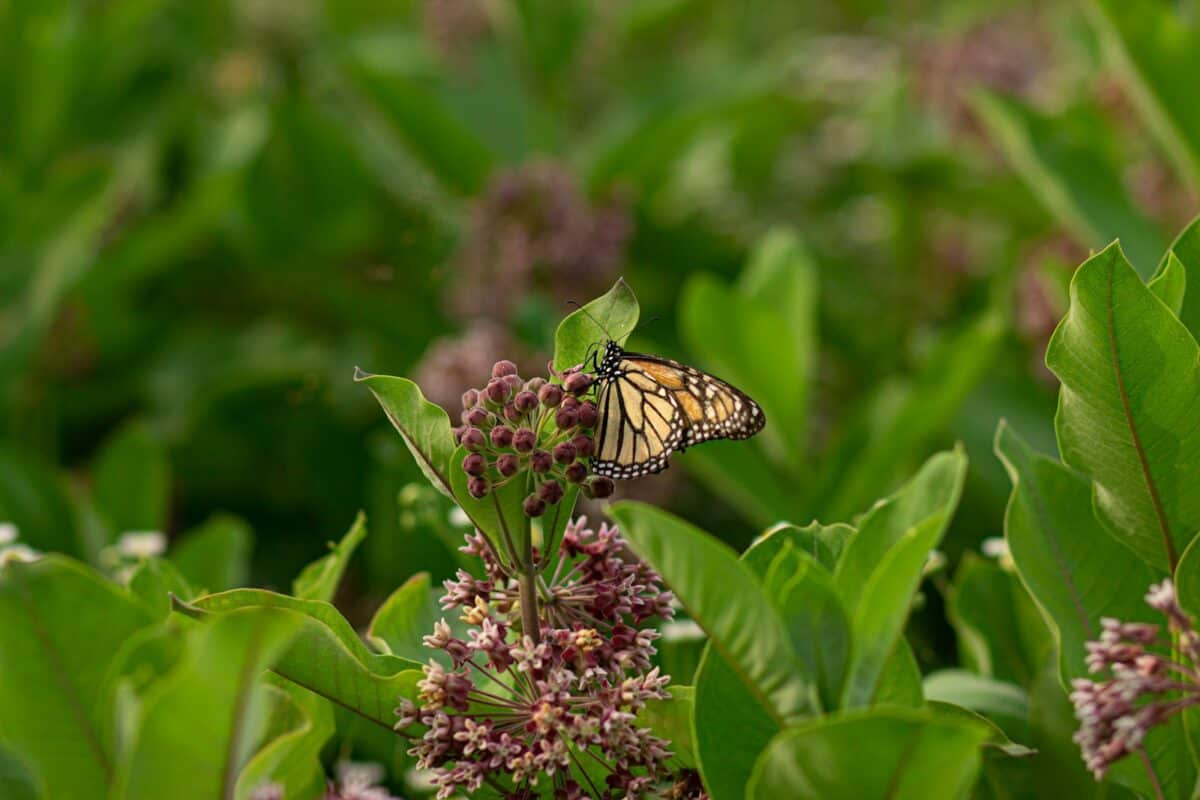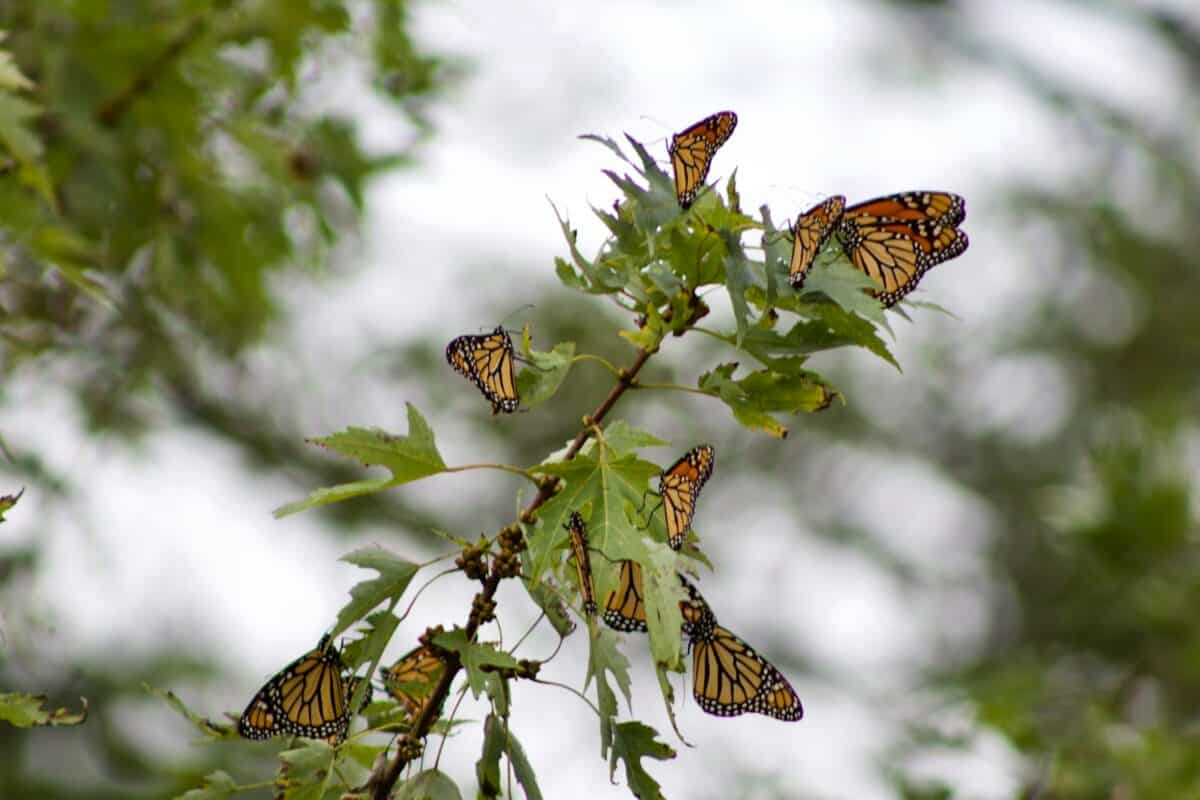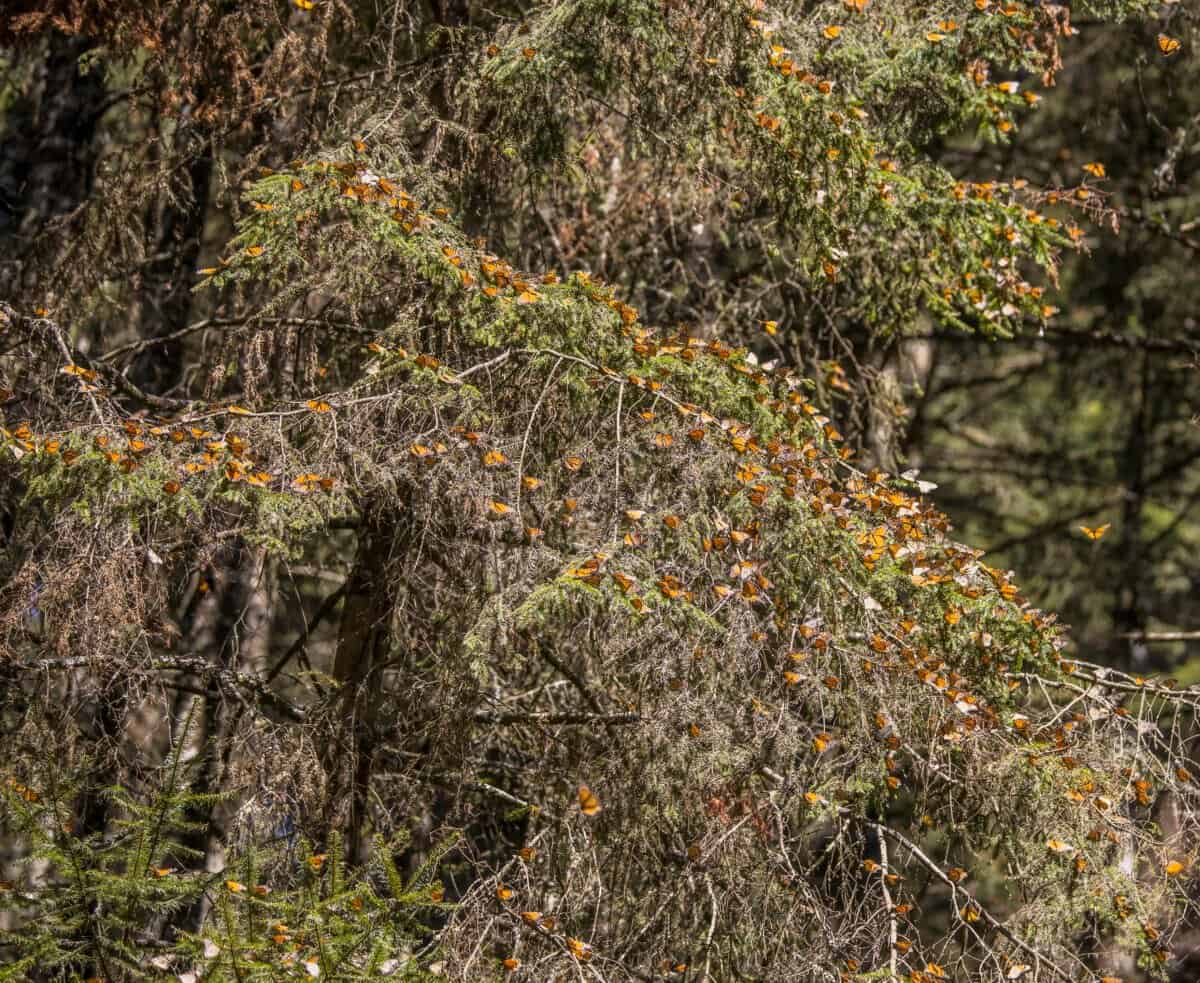In the vast tapestry of natural wonders, few phenomena are as remarkable as the marathon migration and navigational prowess of monarch butterflies. Every autumn, millions of these delicate creatures embark on an epic journey spanning thousands of miles, traveling from Canada and the northern United States to specific overwintering sites in Mexico and California. What makes this migration truly extraordinary is that it’s accomplished by butterflies who have never made the trip before—relying on an inherited memory system so sophisticated that scientists are still unraveling its mysteries. This article explores the astonishing memory capabilities that enable these orange-and-black icons to achieve one of the animal kingdom’s most impressive navigational feats.
The Grand Migration: A Journey Like No Other

Monarch butterflies (Danaus plexippus) undertake one of the most spectacular migrations in the insect world. Each fall, monarchs east of the Rocky Mountains travel up to 3,000 miles to reach specific mountain forests in central Mexico, while western monarchs fly to coastal California. What makes this journey remarkable is that it spans multiple generations—the butterflies that return north in spring are not the same individuals that flew south. Rather, it takes three to four generations to complete the annual cycle, with only the final “super generation” making the entire southward journey. This super generation lives 8-9 months, compared to the 2-6 week lifespan of summer generations, and somehow carries the navigational information needed to find overwintering sites they’ve never visited before.
The Scientific Mystery: Navigation Without Experience

The monarch migration presents scientists with a profound mystery: how do butterflies navigate with pinpoint accuracy to specific destinations they’ve never seen? Unlike migratory birds, which often learn routes from experienced elders, monarchs cannot learn from their ancestors. The super generation that migrates south is typically four generations removed from the butterflies that made the journey the previous year. This means their navigational abilities must be entirely inherited—a form of genetic memory that remains one of biology’s most fascinating puzzles. Researchers have confirmed that this navigation system relies on a complex interplay of environmental cues and internal biological mechanisms.
The Sun Compass: Celestial Navigation

At the heart of the monarch’s navigational toolkit is a sophisticated “sun compass.” These butterflies can determine direction by tracking the sun’s position in the sky throughout the day. This ability would be impressive enough on its own, but it becomes truly remarkable when combined with the monarch’s internal clock. Studies have shown that monarchs possess specialized circadian clocks in their antennae that help them compensate for the sun’s movement across the sky. This allows them to maintain a consistent southwesterly heading during fall migration, regardless of the time of day. Experiments in which researchers altered monarchs’ internal clocks by manipulating light exposure demonstrated that butterflies with disrupted clocks flew in incorrect directions, proving the critical link between their time sense and navigational abilities.
Magnetic Sensing: Earth’s Field as a Guide

Beyond their solar compass, emerging research suggests that monarchs also possess a magnetic compass that allows them to sense Earth’s magnetic field. This secondary navigational system provides crucial backup on cloudy days when the sun isn’t visible. Scientists have found that monarchs contain cryptochrome proteins—light-sensitive molecules that may help detect magnetic fields. When exposed to artificial magnetic fields in laboratory settings, monarchs altered their flight direction, indicating they can perceive and respond to magnetic cues. This dual-compass system demonstrates the remarkable redundancy built into the monarch’s navigational memory, ensuring they can stay on course even when primary environmental cues are unavailable.
Genetic Programming: Memory in DNA

The most extraordinary aspect of monarch navigation is that the complex instructions for migration are encoded genetically. Through careful breeding experiments and genetic studies, researchers have determined that migratory behavior is inherited rather than learned. Butterflies bred in captivity for multiple generations, with no exposure to migratory cues, still demonstrate directional preferences consistent with wild monarchs when tested. This suggests that the butterfly’s brain is essentially pre-programmed with a sophisticated navigational map. Scientists are now working to identify the specific genes responsible for this remarkable capability, with recent studies identifying several gene regions that differ between migratory and non-migratory monarch populations.
Visual Landmarks: Mapping the Journey

While genetic programming provides the fundamental navigational framework, monarchs also appear to use visual landmarks to refine their route. Research indicates that these butterflies can recognize and remember landscape features like mountain ranges, coastlines, and major waterways. This visual memory helps them adjust their course and navigate around obstacles. Particularly fascinating is evidence suggesting that monarchs use ridgelines and other topographical features to funnel their migration, creating “butterfly highways” that concentrate their numbers along certain routes. In experiments where monarchs were relocated to unfamiliar territories, they initially showed disorientation before eventually correcting their course, suggesting they can reconcile discrepancies between their internal map and visual surroundings.
Chemical Memory: Finding Milkweed

Monarchs possess an impressive chemical memory that enables them to locate milkweed plants—the only food their caterpillars can eat. Female monarchs can recognize milkweed by its unique chemical signature and accurately place their eggs on these plants. This ability is crucial for species survival and represents another form of inherited memory. Research has shown that monarchs can detect milkweed-specific compounds called cardenolides from considerable distances, using sensitive chemoreceptors on their legs and antennae. This chemical memory works in concert with their navigational abilities during migration, as monarchs must locate milkweed along their route north in spring to establish breeding sites for the next generation.
Overwintering Site Fidelity: Returning to Ancestral Grounds

Perhaps the most mysterious aspect of monarch memory is their ability to find specific overwintering sites with remarkable precision. In Mexico, monarchs congregate in approximately 12 mountain sites spanning just a few hundred acres—returning to the same groves of oyamel fir trees year after year. Similarly, western monarchs return to specific eucalyptus and pine groves along the California coast. This location-specific memory appears to be extremely precise and stable across generations. Even more remarkably, studies tracking individual butterflies have found that some can return to the exact same tree they left the previous spring. How monarchs encode such specific location information genetically remains one of the greatest unsolved mysteries in insect neurobiology.
Time-Compensated Learning: Adjusting to Changing Skies

Monarch butterflies demonstrate a sophisticated form of learning called time-compensated navigation. This means they can adjust their navigational calculations based on changes in day length and sun angle throughout their migration. As they move south and experience shorter days and different solar positions, monarchs continuously recalibrate their internal compass. Laboratory experiments have confirmed this ability by simulating different day lengths and sun positions. When exposed to artificial conditions mimicking different latitudes, monarchs adjusted their preferred flight directions accordingly. This adaptive memory system allows for remarkable flexibility during their journey, helping them maintain the correct heading despite dramatic changes in their environment over thousands of miles.
Environmental Triggers: Knowing When to Migrate

The timing of monarch migration depends on an inherited memory system that responds to specific environmental cues. As days shorten and temperatures drop in late summer, chemical changes trigger reproductive diapause in the migratory generation, halting sexual development and redirecting energy toward migration. This physiological response is genetically programmed and activates precisely when needed to ensure butterflies begin their journey at the optimal time. Researchers have found that this trigger system is remarkably fine-tuned, with monarchs from different latitudes responding to slightly different day length thresholds. This ensures that butterflies throughout the range begin migrating early enough to reach Mexico before winter, regardless of their starting location—another example of the butterfly’s sophisticated inherited memory systems.
The Neurological Basis: Butterfly Brain Power

The monarch’s navigational feats are all the more impressive considering they possess a brain smaller than a pinhead, containing fewer than one million neurons (compared to the human brain’s 86 billion). Recent neurobiological research has begun mapping the neural circuits responsible for the monarch’s extraordinary memory capabilities. Scientists have identified specialized clusters of neurons that process polarized light information from the sun and integrate it with time information from the butterfly’s internal clock. Using techniques like neural imaging and gene expression analysis, researchers have located specific regions in the monarch brain dedicated to processing directional information. These studies reveal that despite its small size, the monarch brain contains highly specialized neural architecture dedicated to navigation—a remarkable example of evolutionary efficiency in creating complex capabilities with minimal neural resources.
Conservation Challenges: Preserving Butterfly Memory

The monarch’s incredible memory-based migration faces unprecedented threats. Habitat loss, climate change, pesticide use, and deforestation of overwintering sites have contributed to alarming population declines, with eastern monarch numbers dropping by approximately 80% over the past two decades. This decline raises important questions about the stability of the monarch’s genetic memory system. Some scientists worry that if populations fall too low, rare genetic variants that contribute to navigation might be lost from the gene pool. There’s also concern that climate change could disrupt the environmental cues monarchs rely on, potentially confusing their navigational systems. Conservation efforts focus not just on protecting individual butterflies but on preserving the integrity of this remarkable memory-based migration system for future generationsConclusion: A Natural Wonder Worth Preserving
The monarch butterfly’s remarkable memory capabilities represent one of nature’s most elegant solutions to the challenge of long-distance migration. Through a sophisticated combination of genetic programming, celestial navigation, magnetic sensing, and environmental responsiveness, these insects accomplish navigational feats that would be impressive even for animals with much larger brains. As scientists continue to unravel the mysteries of monarch memory, they’re gaining insights that could have applications in fields ranging from robotics to neuroscience. Perhaps most importantly, understanding the monarch’s extraordinary memory reminds us of the sophisticated intelligence that can exist in seemingly simple creatures, challenging our assumptions about the nature of memory itself and inspiring efforts to protect this remarkable natural phenomenon for generations to come.
- The Largest Whale Ever Caught on Camera - August 10, 2025
- The Amazing Memory of Migratory Monarch Butterflies - August 10, 2025
- How Some Animals Can Regrow Their Body Parts - August 10, 2025

